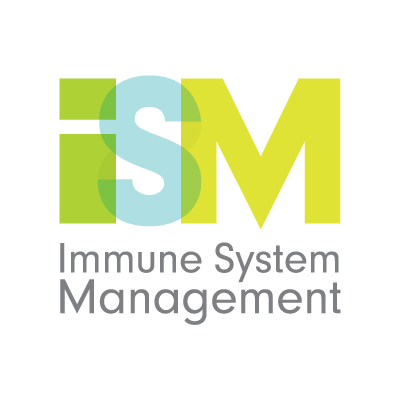What is Your Immune System?
The Body’s First Line of DefenceFluid Systems of The Body
How The Immune System Works
Immune System Process
The purpose of this section is to review the organs, cell types and interactions between cells of the immune system as a commentary on their importance and interdependence. Such an understanding may help comprehend the root of immune deficiencies and how the immune system is critical in the case of specific diseases.
The Body’s First Line of Defense
The immune system is a complex of organs–highly specialized cells and even a circulatory system separate from blood vessels–all of which work together to clear infection from the body. The organs of the immune system, positioned throughout the body, are called lymphoid organs. The word “lymph” in Greek means a pure, clear stream–an appropriate description considering its appearance and purpose.
The immune system is composed of many interdependent cell types that collectively protect the body from bacterial, parasitic, fungal, viral infections, and from the growth of tumor cells. Many of these cell types have specialized functions. The cells of the immune system can engulf bacteria, kill parasites or tumor cells, or kill viral-infected cells. Parts of the immune system are antigen-specific (they recognize and act against particular antigens), systemic (not confined to the initial infection site, but work throughout the body), and have memory (recognize and mount an even stronger attack to the same antigen the next time).
Fluid Systems of the Body
There are two main fluid systems in the body: blood and lymph. The blood and lymph systems are intertwined throughout the body and they are responsible for transporting the agents of the immune system.
(1) The Blood System
The 5 liters of blood of a 70 kg (154 lb) person constitute about 7% of the body’s total weight. The blood flows from the heart into arteries, then to capillaries, and returns to the heart through veins.
Blood is composed of 52–62% liquid plasma and 38–48% cells. The plasma is mostly water (91.5%) and acts as a solvent for transporting other materials (7% protein and 1.5% other “stuff”).
All blood cells are manufactured by stem cells, which live mainly in the bone marrow. The stem cells produce hemocytoblasts that differentiate into the precursors for three types of blood cells:
a) erythrocytes (red blood cells),
b) leukocytes (white blood cells ) (including the sub-category of Lymphocytes), and
c) thrombocytes (platelets).
(2) The Lymph System
Lymph is an alkaline (pH > 7.0) transparent fluid containing white blood cells, chiefly lymphocytes. Lymph bathes the tissues of the body, and the lymphatic vessels collect and move it eventually back into the blood circulation. There are no Red Blood Cells in lymph and it has a lower protein content than blood.
The human lymphoid system has the following:
– Primary organs: bone marrow (in the hollow center of bones) and the thymus gland (located behind the breastbone above the heart), and -secondary organs at or near possible portals of entry for pathogens: adenoids, tonsils, spleen (located at the upper left of the abdomen), lymph nodes (along the lymphatic vessels with concentrations in the neck, armpits, abdomen, and groin), Peyer’s patches (within the intestines), and the appendix.
– Lymphatic vessels and lymph nodes are the parts of the special circulatory system that carries lymph, Lymph nodes dot the network of lymphatic vessels and provide meeting grounds for the immune system cells that defend against invaders. The spleen, at the upper left of the abdomen, is also a staging ground and a place where immune system cells confront foreign microbes.
Both immune cells and foreign molecules enter the lymph nodes via blood vessels or lymphatic vessels. All immune cells exit the lymphatic system and eventually return to the bloodstream. Once in the bloodstream, lymphocytes are transported to tissues throughout the body, where they act as sentries on the lookout for foreign antigens.
How the Immune System Works
Cells that will grow into the many types of more specialized cells that circulate throughout the immune system are produced in the bone marrow. This nutrient-rich, spongy tissue is found in the center shafts of certain long, flat bones of the body, such as the bones of the pelvis. The cells most relevant for understanding vaccines are the lymphocytes, numbering close to one trillion.
Lymphocytes come in two major types: B Cells and T Cells. The peripheral blood contains 20–50% of circulating lymphocytes; the rest move in the lymph system. Roughly 80% of them are T cells, 15% are B Cells and the remainder are null or undifferentiated cells. lymphocytes constitute 20–40% of the body’s WBCs. Their total mass is about the same as that of the brain or liver. B Cells grow to maturity in the bone marrow, and T cells mature in the thymus, high in the chest behind the breastbone.
(1) B Cells
B Cells produce antibodies that circulate in the blood and lymph streams and attach to foreign antigens to mark them for destruction by other immune cells. B Cells are part of what is known as antibody-mediated or humoral immunity, so called because the antibodies circulate in blood and lymph, which the ancient Greeks called, the body’s “humors.”
B Cells become plasma cells, which produce antibodies when a foreign antigen triggers the immune response.
(2) T cells
T cells have two major roles in immune defense. Regulatory T-Cells are essential to orchestrate, regulate and coordinate the overall immune response. T lymphocytes are responsible for cell-mediated immunity (or cellular immunity).
Helper T cells, for example, also known as CD4 positive T cells (CD4+ T cells), alert B Cells to start making antibodies; they also can activate other T cells and immune system scavenger cells called macrophages and influence which type of antibody is produced.
Certain T cells, called CD8 positive T cells (CD8+ T cells), can become killer cells that attack and destroy infected cells. The killer T cells are also called cytotoxic T cells or CTLs (cytotoxic lymphocytes).
Natural Killer Cells — Natural killer cells, often referred to as NK cells, are similar to the killer T cell subset (CD8+ T cells). They function to directly kill certain tumors such as melanomas, lymphomas, and viral-infected cells. NK cells, unlike the CD8+ (killer) T cells, kill their targets without a prior “conference” in the lymphoid organs. However, NK cells that have been activated by secretions from CD4+ T cells will kill their tumor or viral-infected targets more effectively.
Antibodies — Antibodies produced by cells of the immune system recognize foreign antigens and mark them for destruction.
The antibodies that B Cells produce are basic templates with a special region that is highly specific to target a given antigen. Different antibodies are destined for different purposes. Some coat the foreign invaders to make them attractive to the circulating scavenger cells, phagocytes, that will engulf an unwelcome microbe.
When some antibodies combine with antigens, they activate a cascade of nine proteins, known as complement, that have been circulating in an inactive form in the blood. Complement forms a partnership with antibodies, once they have reacted with antigen, to help destroy foreign invaders and remove them from the body. Still, other types of antibodies block viruses from entering cells.
Immune System Process
Activation of helper T cells
After it engulfs and processes an antigen, the macrophage displays the antigen fragments combined with a protein on the macrophage cell surface. The antigen-protein combination attracts a helper T Cell and promotes its activation.
Activation of cytotoxic T cells
After a macrophage engulfs and processes an antigen, the macrophage displays the antigen fragments combined with a protein on the macrophage cell surface. A receptor on a circulating, resting cytotoxic T cell recognizes the antigen-protein complex and binds to it. The binding process and a helper T cell activate the cytotoxic T cell so that it can attack and destroy the diseased cell.
Activation of B Cells to make antibody
A B-cell uses one of its receptors to bind to its matching antigen, which the B cell engulfs and processes. The B cell then displays a piece of the antigen, bound to a protein, on the cell surface. This whole complex then binds to an activated helper T cell. This binding process stimulates the transformation of the B cell into an antibody-secreting plasma cell.
Often, these cells depend on the T helper subset for activation signals in the form of secretions formally known as cytokines, lymphokines, or more specifically interleukins.

